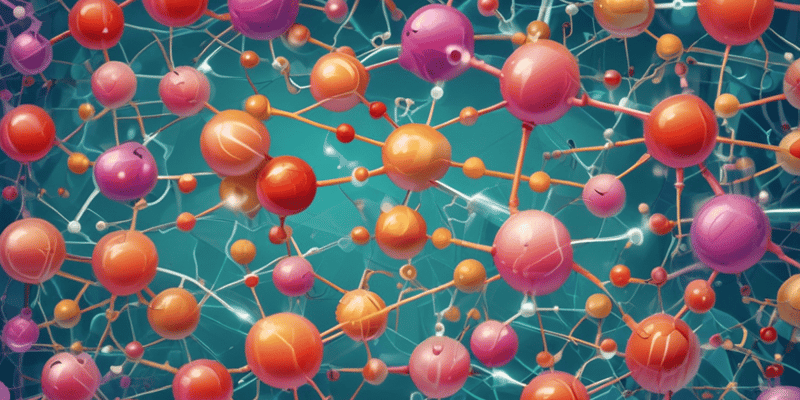16 Questions
Why are lipids associated with phospholipids and proteins in lipoproteins?
Because they are insoluble in water
What holds the lipids and proteins together in lipoproteins?
Non-covalent bonds
How are lipoproteins classified based on electrophoresis?
Based on their electrical charge
What is the pH at which lipoproteins are separated by electrophoresis?
pH 8.6
What is the name of the classification method that depends on the density of lipoproteins?
Density fractionation
What is the name of the lipoprotein that is also known as α-LP?
Alpha Lipoprotein (α-LP)
How many types of lipoproteins are classified by ultra-centrifugation?
Four
What is the general direction of movement of lipoproteins during electrophoresis at pH 8.6?
Towards the positive side
What is the relationship between the density of lipoproteins and their lipid content?
Inversely proportional
Which of the following lipoproteins has the highest density?
HDL
What is the main function of chylomicrons?
Transport of exogenous triglyceride
Which apo-protein is found in small amounts in chylomicrons?
Apo-protein E
What is the main function of VLDL?
Transport of endogenous triglyceride
Which lipoprotein contains apo-protein A and small amounts of apo-proteins C, D, and E?
HDL
What is the role of HDL in lipid metabolism?
Reservoir of apo-proteins required for VLDL and chylomicrons metabolism
Which of the following lipoproteins is responsible for transporting cholesterol to peripheral tissues?
LDL
Study Notes
Lipoproteins
- Lipoproteins are structures that allow lipids to be transported in plasma, despite lipids being insoluble in water.
- Lipoproteins are composed of neutral lipids, phospholipids, and proteins, held together by non-covalent bonds.
Classification of Lipoproteins
- Two principle modes of classification:
- By Electrophoresis: based on the charge of the lipoproteins.
- By Ultra-centrifugation: based on the density of the lipoproteins.
Electrophoresis Classification
- Lipoproteins are separated into different bands based on their charge at pH 8.6.
- Four types of lipoproteins are classified using electrophoresis:
- Chylomicrons
- Beta Lipoprotein (β-LP)
- Pre-beta Lipoprotein (preβ-LP)
- Alpha Lipoprotein (α-LP)
Density Fractionation Classification
- Lipoproteins are classified into four types based on their density:
- Chylomicrons
- Very Low Density Lipoprotein (VLDL or pre-β)
- Low Density Lipoprotein (LDL or β)
- High Density Lipoprotein (HDL or α)
- Note: Intermediate Density Lipoprotein (IDL) may sometimes be detected between VLDL and LDL.
Apo-Proteins in Lipoproteins
- Apo-proteins are proteins found in lipoproteins, also known as apo-lipoproteins.
- Each type of lipoprotein contains different types of apo-proteins.
- Types of apo-proteins found in each lipoprotein:
- Chylomicrons: apo-proteins A, B, C, and E
- VLDL: apo-proteins B and C
- IDL: apo-proteins B and E
- LDL: apo-protein B and small amounts of apo-protein C
- HDL: apo-protein A and small amounts of apo-proteins C, D, and E
Functions of Lipoproteins
- Chylomicrons: transport exogenous triglyceride, cholesterol, fat-soluble vitamins, and other lipids from the intestine to the systemic circulation.
- VLDL: transport endogenous triglyceride from the liver to peripheral tissues.
- LDL: transport cholesterol to peripheral tissues, and also transport phospholipids.
- HDL:
- Reservoir of apo-proteins (mainly C and E) required for VLDL and chylomicron metabolism.
- Uptake of un-esterified cholesterol from other lipoproteins and cell membranes.
Learn about lipoproteins, including their structure, classification, composition, and functions, and how they overcome the difficulty of lipids being insoluble in water.
Make Your Own Quizzes and Flashcards
Convert your notes into interactive study material.
Get started for free



